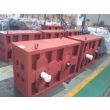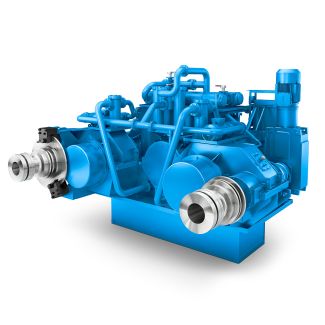B2-CV-7-A ype B n rpm o n r e q u e s tGear unit sizes i Bevel-helical speed reducer B2
In stock
SKU
B2-CV-7-A
$74,464.29
Flender/Flender Gear Units/Bevel-helical speed reducer B2
ments. 7.3 Vegetables 7.3.1 Tomatoes According to Abdel-Kader and associates (, irradiation at mean dose of 2.8 kGy combined with storage at temperature of 1 C1C increased the shelf life of tomatoes by 4 days as result of decay control.
storage at temperature of 1 C1C increased the shelf life of tomatoes by 4 days as result of decay control.  However, Mathur ( considered dose of0.7 kGy optimal for tomatoes when the storage temperature was 9 C1C and 8% 9%
However, Mathur ( considered dose of0.7 kGy optimal for tomatoes when the storage temperature was 9 C1C and 8% 9%  relative humidity. Suceptibility to decay increased with irradiation dose. Mathur ( found that decay could be controlled with postirradiation treatment
relative humidity. Suceptibility to decay increased with irradiation dose. Mathur ( found that decay could be controlled with postirradiation treatment  with 5 ppm methyl ester of indolyl-3-acetic acid, which also reduced losses due to transpiration andrespiration. The storage life of irradiated tomatoes treated with the hormone and storedat 9C1C was 8 days as against 4 days of control fruits. 7.3.2 Onions Onion is one of the more economically important vegetables grown and exported in many countries of the world. Compared to many other fresh vegetable crops, matured and cured onion bulbs can be kept for relatively longer periods because of their natural dormancymechanisms and low respiration and metabolic activity. However, considerable losses stilloccur during long-term storage especially under unfavorable environmental conditions.The interest in the use of irradiation for sprout inhibition of onions and other bulb cropsof the allium family was stimulated by the report of Dallyn and colleagues ( that complete inhibition of sprouting in onions could be obtained after gamma irradiation with doses as low as 0.0 to 0.7 kGy. Subsequently, several investigations have been carriedout throughout the world of the application of ionizing radiation for sprout inhibition ofdifferent cultivars and strains of onions grown under varying agroclimatic conditions.Most of the results seemed to agree that for maximal sprout inhibition, irradiation shouldbe carried out very soon after harvesting of onions, when they are in the dormant period,with doses in the range of 0.0 to 0.1 kGy. Moreover, Ogata and Chackin ( found that hi
with 5 ppm methyl ester of indolyl-3-acetic acid, which also reduced losses due to transpiration andrespiration. The storage life of irradiated tomatoes treated with the hormone and storedat 9C1C was 8 days as against 4 days of control fruits. 7.3.2 Onions Onion is one of the more economically important vegetables grown and exported in many countries of the world. Compared to many other fresh vegetable crops, matured and cured onion bulbs can be kept for relatively longer periods because of their natural dormancymechanisms and low respiration and metabolic activity. However, considerable losses stilloccur during long-term storage especially under unfavorable environmental conditions.The interest in the use of irradiation for sprout inhibition of onions and other bulb cropsof the allium family was stimulated by the report of Dallyn and colleagues ( that complete inhibition of sprouting in onions could be obtained after gamma irradiation with doses as low as 0.0 to 0.7 kGy. Subsequently, several investigations have been carriedout throughout the world of the application of ionizing radiation for sprout inhibition ofdifferent cultivars and strains of onions grown under varying agroclimatic conditions.Most of the results seemed to agree that for maximal sprout inhibition, irradiation shouldbe carried out very soon after harvesting of onions, when they are in the dormant period,with doses in the range of 0.0 to 0.1 kGy. Moreover, Ogata and Chackin ( found that hi| Model Type | Bevel-helical speed reducer B2 |
|---|---|
| Gear Type | Bevel Helical Gear |
| Weight (kg) | 3475.000000 |
| Ratio Range | 1 : 5…18 |
| Low Speed Output | Solid shaft without parallel key |
| Nominal Torque | 19000 Nm |
| Mounting Arrangements | Vertical mounting position |
| Manufacturer | Flender Brasil Ltda |
| Country of Manufacture | Honduras |
| Data Sheet & Drawings | B2-CV-7-A ype B n rpm o n r e q u e s tGear unit sizes i Bevel-helical speed reducer B2 |












